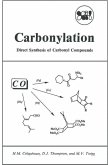The development of "high-tech" materials in contemporary industries is deeply related to a detailed understanding of specific surface properties of catalysts which make particular reactions possible. But this understanding presupposes that there exists a body of theory capable of explaining situations not easily accessible to experimental methods and of relating experimental findings among themselves and with theoretical constructs. For these reasons, theoretical developments in surface physics and surface chemistry of transition metal compounds have been of paramount importance in promoting progress in catalysis, electronic devices, corrosion, etc. Although a great variety of spectroscopic methods for analyzing solids and surfaces at molecular scale have been introduced in recent years, nevertheless, many questions about the adsorption sites and intermediates, the effect of promoters, the poisoning of active sites, the nature of segregation of impurities, the process of surface reconstruction, the mechanisms of reactions, etc. have remained unanswered simply because of the great complexity of surface phenomena. It is in this sense that quantum mechanical method- combined with experimental data - may shed some light on the microscopic properties of new surface materials.








